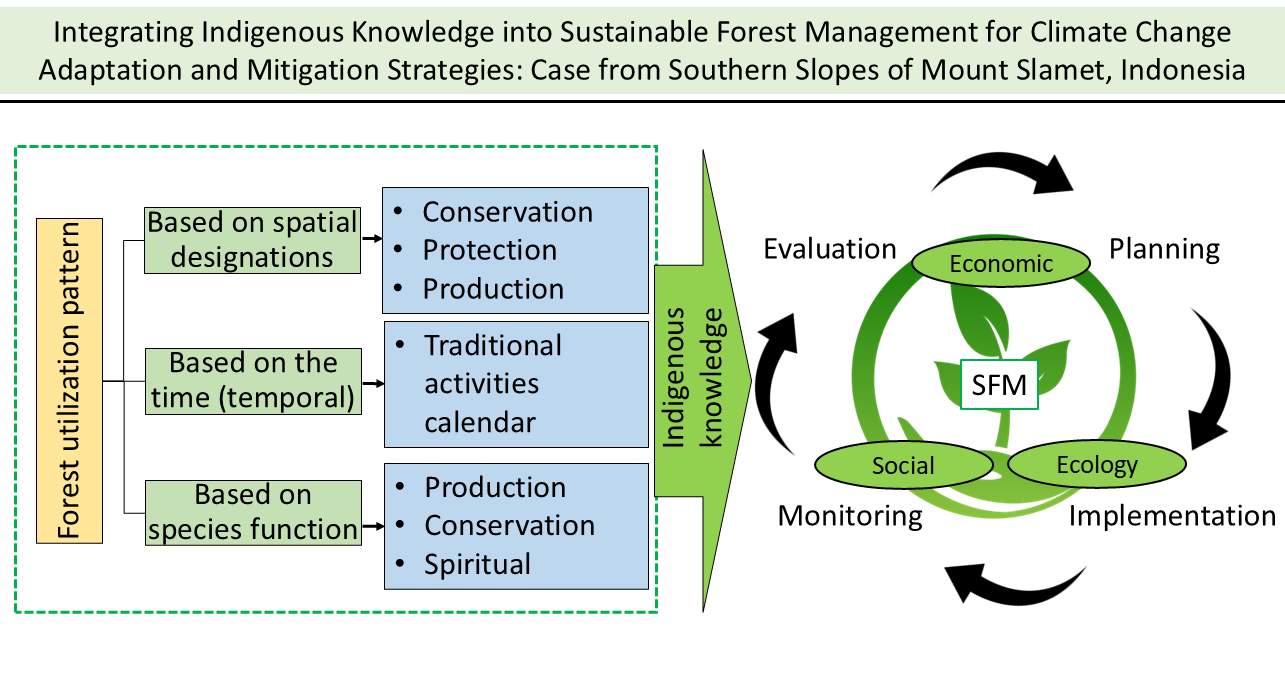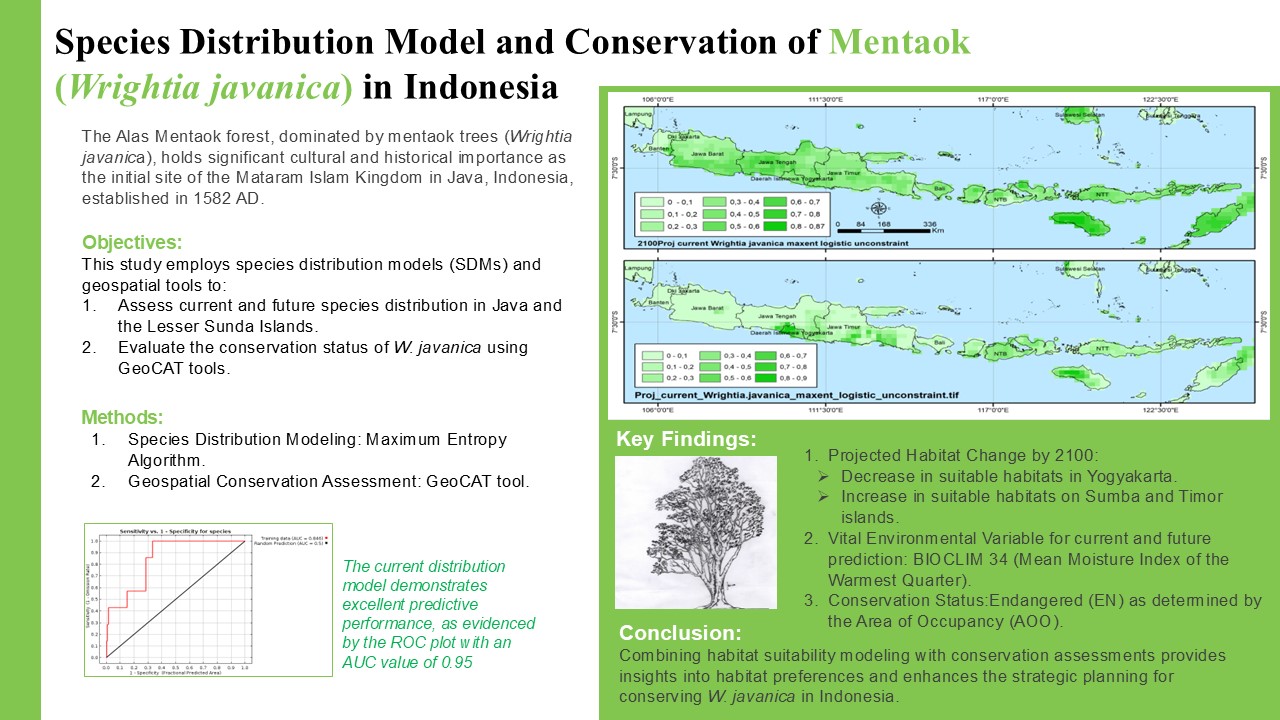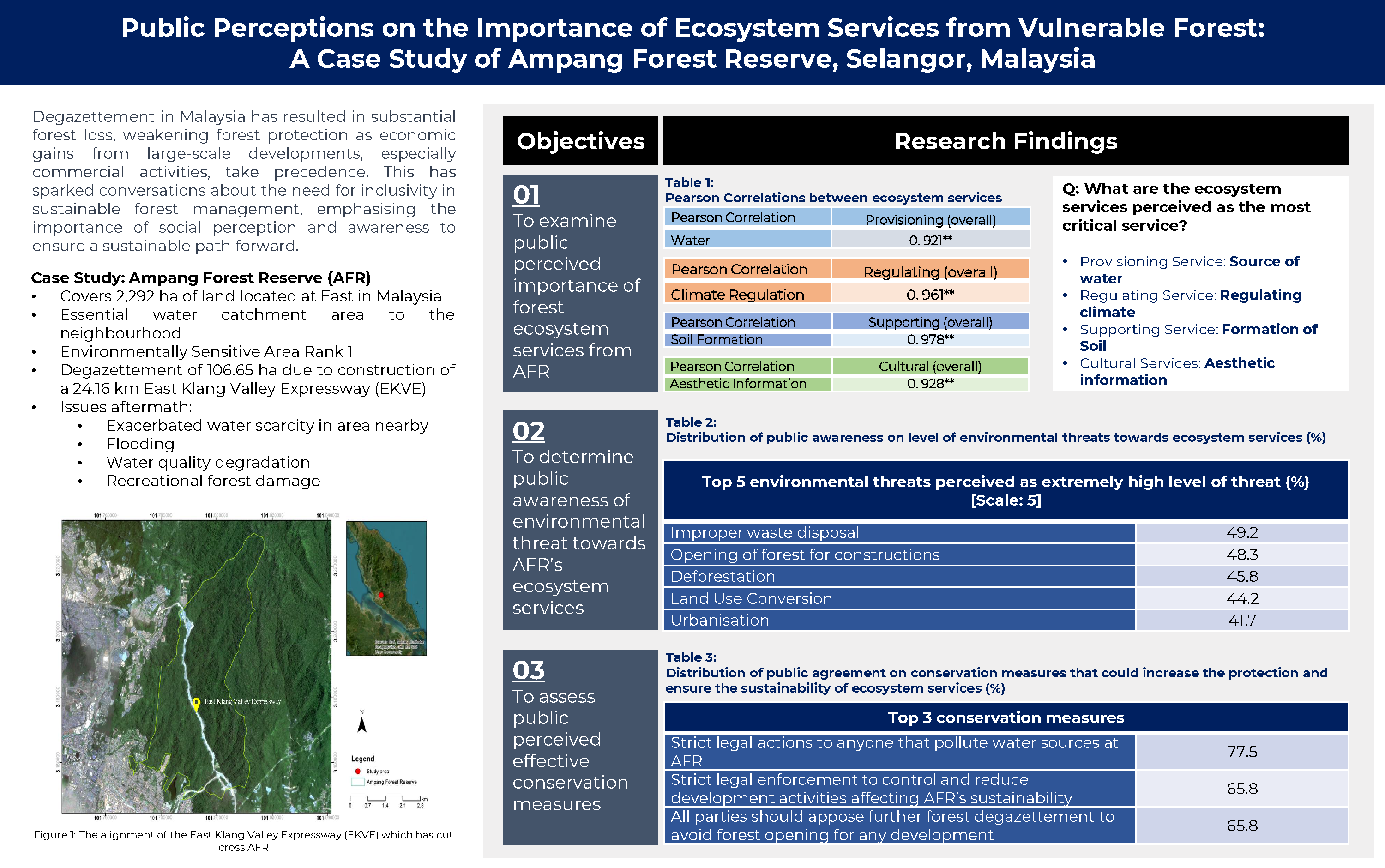Carving The Future of Nature Ecotourism in Indonesia: Case of Taman Wisata Alam Telogo Warno Telogo Pengilon
Abstract
Indonesia has potential ecotourism spots that are need to be utilized as well as to increase the value of forest benefits from the aspect of environmental services while maintaining the function of the area. However, there are contraints in managing natural tourism in conservation areas according to the concept of sustainable tourism. This study focuses on the performance of sustainable nature tourism management applied in Taman Wisata Alam Telogo Warno Telogo Pengilon (TWA TWTP) that is carried out in the form of a partnership between the Balai Konservasi Sumber Daya Alam Jawa Tengah (Central Java Natural Resources Conservation Office; BKSDA) and PT. Alam Indah Bonbin Lestari (AIBBL) as the holder of Ijin Usaha Penyediaan Sarana Wisata Alam (Business License for the Provision of Nature Tourism Facilities; IUPSWA). The results show positive improvement in the management of TWA TWTP. However, several issues that require immediate improvement still remain. In general, all of the aspects are categorized in to four scopes: (1) management of effective sustainable tourism destination, (2) the optimization of economic benefits for local communities, (3) the optimization of cultural preservation for the communities and visitors, and (4) environmental conservation.
References
Anup, K. C. (2016). Ecotourism and its role in sustainable development of Nepal. In L. Butowski, Tourism-From Empirical Research Towards Practical Application. IntechOpen. https://doi.org/10.5772/62308
Balmford, A., Beresford, J., Green, J., Naidoo, R., Walpole, M., & Manica, A. (2009). A global perspective on trends in nature-based tourism. PLoS Biol, 7(6), e1000144. https://doi.org/10.1371/journal.pbio.1000144
[BKSDA] Balai Konservasi Sumber Daya Alam Jawa Tengah. (2019). Laporan monitoring dan evaluasi ijin usaha penyediaan sarana wisata alam TWA Telogo Warno Telogo Pengilon. Semarang: Balai Konservasi Sumber Daya Alam Jawa Tengah.
Blamey, R. K. (2001). Principles of ecoutourism. In D. B. Weaver, The ecyclopedia of ecotourism. CABI Publishing. Retrieved from http://shora.tabriz.ir/Uploads/83/cms/user/File/657/E_Book/Tourism/TheEncyclopediaof Ecotourism.pdf#page=19 25 November2019. Pp 5–22.
[BPS] Biro Pusat Statistik. (2019). Statistik wisatawan nusantara 2018. Jakarta: Biro Pusat Statistik Republik Indonesia.
Ceballos-Lascuráin, H. (1996). Tourism, ecotourism and protected areas. Switzerland and Cambridge: IUCN Gland.
Chaperon, S. (2017). Tourism industry responses to public-private partnership arrangements for destination management organisations in small island economies: A case study of Jersey, Channel Islands. International Journal of Tourism Policy, 7(1). https://doi.org/10.1504/IJTP.2017.10003750
Das, M., & Chatterjee, B. (2015). Ecotourism: A panacea or a predicament? Tourism Management Perspecttive, 14, 3–16. https://doi.org/10.1016/j.tmp.2015.01.002
Directorate General of Conservation of Natural Resources and Ecosystems. (2015). Rencana Strategis Direktorat Jenderal Konservasi Sumber Daya Alam dan Ekosistem Tahun 2015–2019. Jakarta: Direktorat Jenderal Konservasi Sumber Daya Alam dan Ekosistem, Kementerian Lingkungan Hidup dan Kehutanan.
Estrella, G., Zemp, M., & Wagenseil, U. (2019). Corporate social responsibility: The role of modern destination management organizations. BEST EN Think Tank XVI Corporate Responsibility in Tourism-Standards Practices and Policies.
Fandeli, C., Muhammad. (2019). Analisis daya dukung lingkungan dalam perspektif pembangunan berkelanjutan. Jakarta.: Direktorat Jenderal Konservasi Sumber Daya Alam dan Ekosistem, Kementerian Lingkungan Hidup dan Kehutanan.
Gössling, S. (1999). Ecotourism: A means to safeguard biodiversity and ecosystem functions? Ecological Economics 29, 303–320.
Guzha, A. C., Rufino, M. C., Okoth, S., Jacobs, S., & Nóbrega, R. L. B. (2018). Impacts of land use and land cover change on surface runoff, discharge and flows: Evidence from East Africa. Journal of Hydrology: Regional Studies, 15, 49–67.
Hajli, M. N. (2013). A study of the impact of social media on consumers. International Journal of Market Research, 5(3).
Hansell, A., & Oppenheimer, C. (2005). Health hazards from volcanic gases: A systematic literature review. Archives of Environmental Health: An International Journal, 59(12), 628–639 https://doi.org/10.1080/00039890409602947
Hetzer, W. (1965). Environment, tourism, culture. Links, 1–3.
Honey, M. (1999). Ecotourism and sustainable development: Who owns paradise? Washington, DC: Island Press.
Kline, J. D. (2001). Tourism and natural eesource management: A general overview of research and issues. Gen. Tech. Rep. PNW-GTR-506. Portland: U.S. Department of Agriculture, Forest Service, Pacific Northwest Research Station. https://doi.org/10.2737/PNW-GTR-506
Kiper, T. (2013). Role of ecotoursm in sustainable development. In M. Ozyavuz, Advance in Ladscape Architecture. IntechOpen. https://doi.org/10.5772/55749
Kotler, P., Bowen, J., & Makens, J. (2002). Marketing for hospitality and tourism (3rd ed.). New Jersey: Pearson Education.
Lepetu, J., Makopondo, R. O. B., & Darkoh, M. B. K. (2008). Community-based natural resource management and tourism partnership in Botswana: Which way forward? Botswana Notes and Records, 39, 113–124.
Liu, Z. (2003). Sustainable tourism development: A critique. Journal of Sustainable Tourism, 11(6), 459–475. https://doi.org/10.1080/09669580308667216
MacKinnon, J., Phillipps, K., & van Balen, B. (1990). Buku panduan lapangan pengenalan burung di Sumatera, Jawa, Bali dan Kalimantan. Yogyakarta: Gajah Mada University Press.
Mensah, I., Ernest, A. (2013). Community participation in ecotourism: The case of Bobiri Forest Reserve and Butterfly Sanctuary in Ashanti Region of Ghana. American Journal of Tourism Management, 2(1A), 34–42 https://10.5923/s.tourism.201304.04
Mollet, J. A. (2016). Sustainable development ecotourism in West Papua: Learning from the Scottish experience. Paper presented at ICSBP Conference Proceeding. https://doi.org/10.18502/kss.v1i1.429
Osborne, D., & Gaebler, T. (1991). Mewirausahakan birokrasi. Jakarta: Pustaka Binaman Pressindo.
Priatna. (2014). Karakteristik gas vulkanik dan implikasinya terhadap daerah wisata di dataran tinggi Dieng. Jurnal Lingkungan dan Bencana Geologi, 5(3), 159–172.
Rosalino, L. M., & Grilo, C. (2011). What drives visitors to protected areas in Portugal: accebilities, human pressure or natural resources? Journal of Tourism and Sustainability, 1(1), 2–11.
Sebola, M. P., Fourie, L. de W. (2006). Community participation in ecotourism destinations: Maleboho Nature Reserve. In C. A. Brebbia, & F. D. Pineda, Sustainable tourism II. Southampton: WIT Press. https://doi.org/10.2495/ST060181
Soeprobowati, T. R., Suedy, S. W. A., & Hadiyanto. (2016). Diatoms and water quality of Telaga Warna Dieng, Java Indonesia. Paper presented at 2nd International Conference on Tropical and Coastal Region Eco Development. IOP Publishing. IOP Conf. Series: Earth and Environmental Science, 55, 012–051. https://doi.org/10.1088/1755-1315/55/1/012051
Sudarmadji, Supriyono, H., & Lestari, S. (2015). Danau-danau vulkanik di Dataran Tinggi Dieng: Pemanfaatan dan masalah lingkungan yang dihadapi. Jurnal Teknosains, 5(1), 1–80.
[TIES] The International Tourism Society. (2019). https://ecotourism.org/what-is-ecotourism
[UNEP] United Nations Environment Programme. (2002). Making tourism more sustainable: A guide for policy makers. Paris: United Nations Environment Programme.
[UNWTO] United Nation World Tourism Organization. (2018). UNWTO Annual Report 2017. Madrid: United Nations World Tourism Organization.
World Tourism Organization. (2018). UNWTO Annual Report 2017. United Nations World Tourism Organization. Madrid
Yovi, E. Y. (2019). Status ergonomi pekerja sektor kehutanan di Indonesia: Kelelahan fisik-mental-sosial, kepuasan kerja, konsep sumber bahaya, dan konsep biaya kecelakaan. Jurnal Ilmu Kehutanan, 40(2), 137–150. https://doi.org/10.22146/jik.52140
Yovi, E. Y., & Yamada, Y. (2019). Addressing occupational ergonomics issues in Indonesian forestry: Laborer, operator, or equivalent workers. Croatian Journal of Forest Engineering, 40(2), 351–363. https://doi.org/10.5552/crojfe.2019.558
Yovi, E. Y., Nurrochmat, D. R. (2018). An occupational ergonomics in the Indonesian state mandatory sustainable forest management instrument: A review. Forest Policy and Economics, 91, 27–35. https://doi.org/10.1016/j.forpol.2017.11.007
Zhang, X., Cao, W., Guo, Q., & Wu, S. (2010). Effect of landuse change on surface runoff and sedimen yield at different watershed scales on the Loess Plateau. International Journal of Sedimen Research 25(3), 283–293. https://doi.org/10.1016/S1001-6279(10)60045-5.4.
Zhao, Y., Jiao, L. (2019). Resources development and tourism environmental carrying capacity of ecotourism industry in Pingdingshan City, China. Ecological Processes, 8:7. https://doi.org/10.1186/s13717-019-0161-0
Authors

This work is licensed under a Creative Commons Attribution 4.0 International License.
Jurnal Manajemen Hutan Tropika is an open access journal which means that all contents is freely available without charge to the user or his/her institution. Users are allowed to read, download, copy, distribute, print, search, or link to the full texts of the articles in this journal without asking prior permission from the publisher or the author. This is in accordance with the Budapest Open Access Initiative (BOAI) definition of open access.








